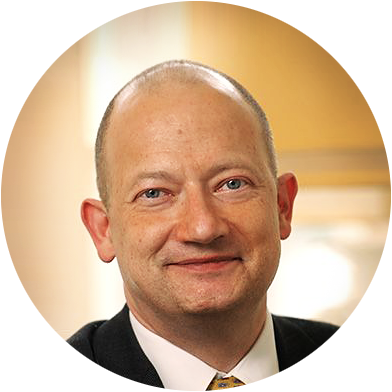Many self-employed persons and freelancers are not aware that, according to a ruling of the Federal Court of Justice, private insurance pensions, such as accident or occupational disability pensions, or pensions of former freelancers and self-employed persons do not enjoy any protection against seizure. As a rule, the legally permitted insurance assets that are exempt from seizure are so low that in the event of insolvency there is a threat of having to go to the social welfare office.
The Federal Court of Justice (BGH) decided in a ruling of 15 November 2007 that private insurance pensions, such as accident or occupational disability pensions or pensions of former freelancers and self-employed persons do not enjoy any protection against seizure (Ref.: IX ZB 89/05). The same applies to self-employed persons and freelancers who relied on the “fairy tale” that their company pension scheme – as a shareholder-managing director pension scheme – was protected by pledging against access by the insolvency administrator or creditors.
The BGH expressly allows the insolvency administrator to collect the reinsurance policy – despite effective pledging and vesting (Ref.: IX ZR 138/04). In principle, therefore, only pensions and retirement pensions that are owed by the employer or an employer are affected by attachment protection. Only in this case can the garnishment-free amount of around 900 euros for single persons and just under 1400 euros for married persons come into play. As far as it does not concern pension payments or pension claims, there is “no room for an attachment protection of pensions from the outset”, so the BGH.
In case of insolvency of freelancers and self-employed persons, there is the threat of going to the social welfare office
The BGH clarifies that only employees and civil servants who have established an old-age provision under insurance law for themselves or their dependents can be granted enforcement protection. This refers exclusively to private pensions which replace a retirement pension or a survivor’s pension, i.e. insurance benefits which are “established on the occasion of leaving a service or employment relationship”.
Therefore, continuing pensions of freelancers, self-employed persons, or persons who have not worked are not protected. Professionally self-employed persons can only build up a small amount of garnishment-free insurance assets within the framework of § 851 c ZPO. As a rule, however, these pensions will be so small that supplementary social assistance will come into question.
The BGH considers this unequal treatment to be constitutional:
“On the one hand, the self-employed still appear to be less in need of protection today, because the higher earning opportunities regularly associated with the exercise of their activity also suggest a more extensive claim under enforcement law. On the other hand, self-employed persons are free (§ 7 of the Social Code, Book VI) to acquire pension payments (cf. BGH, decision of 25 August 2004 -IXa ZB 271/03, NJW 2004, 3771) with attachment protection (§ 54.4 of the Social Code, Book I, §§ 850 et seq. of the Code of Civil Procedure) by joining the statutory pension insurance scheme. The legislature is therefore not required to treat every permissible independent arrangement of old-age provision in the same way under enforcement law.”
Asset protection begins with the separation or formation of different asset spheres
A member of a social committee said in early 2007 that a legal amendment would not find a majority in the Bundestag. The BGH also suggests the argument of the “higher responsibility and maturity” of the self-employed and freelancers. Consequently, it is up to the people concerned to orient themselves and to shape the circumstances themselves. However, only experts master such issues. Asset protection begins with the separation or formation of different asset spheres.
In the professional sphere, this means operating a professional risk management system, if possible combined with your own liability assets – separate from your private assets. However, private assets can also be protected from creditor access in certain areas. At least this touches on complicated solutions, i.e. foundations, trusts and own funds, possibly also abroad. For the self-employed and freelancers, “greater responsibility and maturity” means realising that the solution does not always have to be domestic.
And there’s another bitter pill that comes with it:
The mediator of private and company pension plans often served the freelancer and self-employed with half-truths that were not better learned, because more truth was not conducive to sales. Wonderful “sample forms” suggest an apparent security, which unfortunately does not exist at all. Trying to move assets into a safe haven at the last minute when insolvency is imminent usually does not work. For this reason, those affected must make their own assets and provisions secure in good time. The product seller rarely has the solution that is really viable in the end.
by Dr. Johannes Fiala and Dipl.-Math. Peter A. Schramm
courtesy of
from www.kaden-verlag.de (published in CHAZ 4/2008, page 1)
and
www.kfo-zeitung.de (published in KFO-Zeitung 5/2008, page 8 under the headline: Private pension plans are completely seizable – even in case of insolvency of self-employed persons there is no seizure allowance)
and
by www.vvw.de (published in Versicherungswirtschaft 8/2008, page 666, under the headline; BGH: Private pension provision pensions completely seizable)
and
Halstenbeker Magazin 5/2008, page 18, under the heading: Pensions completely seizable
and
www.hussberlin.de (Elektro Praktiker 5/2008, under the headline: Private pension provisions are attachable)
and
www.friseurwelt.net (published in
Hairdresser World 11/2010, pages 78-79 under the heading: A
m
end stands welfare)
and
www.network-karriere.de (published in Network-Karriere 1/2011, page 30 under the headline: Occupational disability pensions are attachable).
